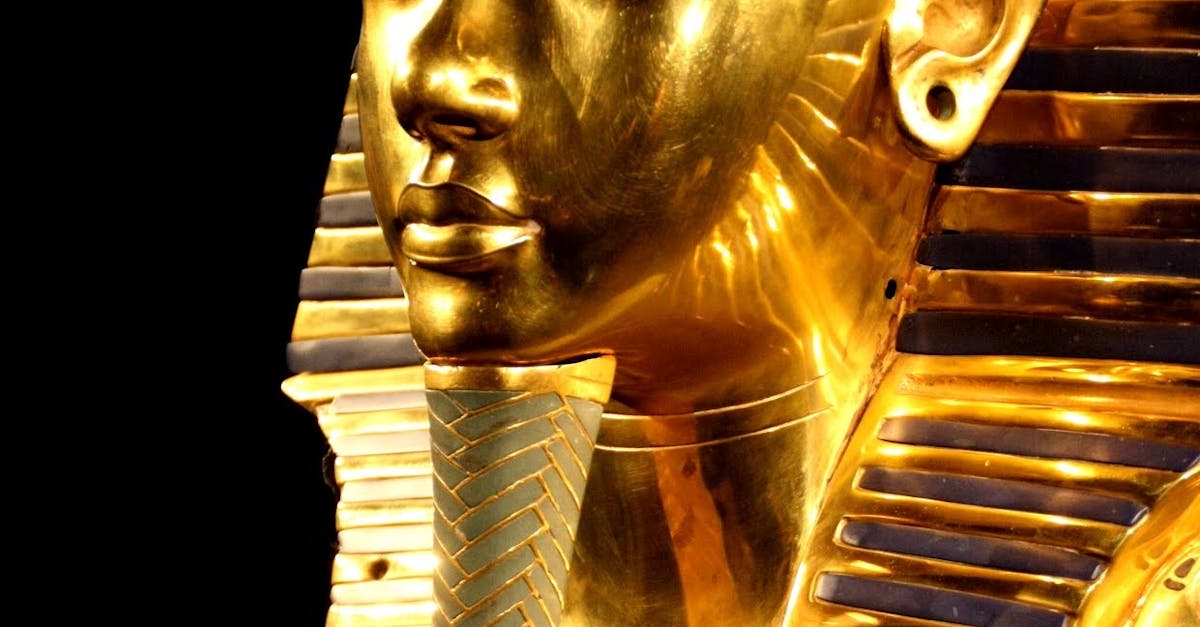Unlocking the Secrets of Gold Purity: A Comprehensive Guide

When it comes to gold, understanding its purity and quality is crucial. Gold is measured in karats (k), with 24k being the purest form of gold, containing 99.9% gold. As the karat value decreases, so does the gold content, with 10k and 14k being common choices for gold jewelry.
Gold purity also impacts its value, with higher karats commanding a higher price per gram. However, higher karat gold is softer and more prone to scratches, while lower karat gold is more durable but has a less intense golden hue.
24k and 22k are considered pure gold, while lower karats like 18k, 14k, and 10k are considered gold alloys, mixed with other metals like copper, silver, or zinc for enhanced durability and affordability. Each karat has its own unique properties and is suitable for different purposes, such as jewelry, coins, or investments.
Key Insights
- Gold purity is measured in karats (k), with 24k being the purest form of gold.
- Identifying real gold can be done through hallmarks, acid testing, or XRF analysis.
- 24k gold is softer and more expensive than 18k gold, which is more durable and affordable.
- The right karat for your needs depends on durability, aesthetics, and value retention.
- Chinese gold is known for its distinctive yellow hue due to cultural and historical factors.
1. Understanding Gold Purity: Karats and Fineness
When it comes to gold, understanding its purity and quality is crucial. Gold purity is measured in karats (k), with 24k being the purest form of gold, containing 99.9% gold. As the karat value decreases, so does the gold content, with 10k and 14k being common choices for gold jewelry.
Gold purity also impacts its value, with higher karats commanding a higher price per gram. However, higher karat gold is softer and more prone to scratches, while lower karat gold is more durable but has a less intense golden hue.
In addition to karats, gold purity can also be expressed in terms of fineness. Fineness is measured in parts per thousand, with 24k gold having a fineness of 999. 18k gold has a fineness of 750, indicating that it contains 75% gold and 25% other metals. Fineness is a more precise measure of gold purity than karats and is often used in professional settings like jewelry appraisals and bullion trading.
2. Identifying Real Gold: A Comprehensive Guide

Identifying real gold is essential to avoid being scammed and ensure you’re getting what you pay for. Here are some proven techniques and resources to help you authenticate gold:
-
Look for hallmarks: Reputable jewelers will hallmark their gold pieces with a stamp indicating the karat or fineness. Common hallmarks include 24k, 18k, 14k, and 10k. You can also look for the jeweler’s mark or logo, which can be used to verify the authenticity of the piece.
-
Acid test: The acid test is a simple and effective way to test the purity of gold. A small drop of nitric acid is applied to the gold, and if the acid turns milky, it indicates that the gold is not pure. However, it’s important to note that the acid test can damage the gold, so it should only be performed by a jeweler or other professional.
-
X-ray fluorescence (XRF) analyzer: An XRF analyzer is a non-destructive way to determine the elemental composition of gold. This can be used to verify the purity of gold and identify any other metals that may be present.
3. 24k vs. 22k Gold: Comparing Purity and Applications
24k gold is the purest form of gold, containing 99.9% gold. It is very soft and malleable, making it difficult to use in jewelry without mixing it with other metals. 22k gold is an alloy that contains 91.7% gold and 8.3% other metals, typically copper or silver. It is harder and more durable than 24k gold, making it more suitable for jewelry and other applications.
24k gold is often used for investment purposes, as it is the purest form of gold and is less likely to fluctuate in value. It is also used in high-end jewelry, such as wedding rings and other special occasion pieces. 22k gold is more commonly used in everyday jewelry, as it is more durable and affordable than 24k gold. It is also used in coins and other applications where a high degree of purity is not required.
Ultimately, the best choice between 24k and 22k gold depends on your individual needs and preferences. If you are looking for the purest form of gold for investment purposes or special occasion jewelry, 24k gold is a good choice. If you are looking for a more durable and affordable option for everyday jewelry, 22k gold is a good choice.
4. Choosing the Right Karat for Your Needs

When choosing the right karat for your gold jewelry, there are several factors to consider, including durability, aesthetics, and value retention.
Durability: Higher karat gold is softer and more malleable, making it more prone to scratches and dents. Lower karat gold is more durable and can withstand everyday wear and tear better. If you are looking for a piece of jewelry that you will wear every day, a lower karat gold, such as 14k or 10k, may be a better choice.
Aesthetics: The higher the karat, the more intense the yellow color of the gold. Lower karat gold has a more muted yellow color. Ultimately, the best way to choose the right karat for your taste is to look at different pieces of jewelry and see what you prefer.
Value retention: Gold is a valuable metal, and the price of gold fluctuates over time. Higher karat gold is more valuable than lower karat gold, and it will retain its value better over time. If you are looking for a piece of jewelry that you can resell later, a higher karat gold may be a better choice.
5. The Mystery of Chinese Gold: Unraveling Its Yellow Hue
Chinese gold is known for its distinctive yellow hue, which is different from the more orangey-yellow color of gold from other parts of the world. This unique color is due to a combination of cultural and historical factors.
One factor is the use of copper in Chinese gold. Chinese goldsmiths have traditionally used a higher percentage of copper in their gold alloys, which gives the gold a more yellow color. This is in contrast to gold from other parts of the world, which typically uses silver or palladium to alloy the gold, resulting in a more orangey-yellow color.
Another factor is the Chinese cultural preference for yellow gold. In Chinese culture, yellow is a lucky color that is associated with wealth and prosperity. As a result, Chinese goldsmiths have traditionally produced gold jewelry that is a deep, rich yellow color.
Today, Chinese gold is still popular for its unique yellow hue and its cultural significance. It is used in a wide variety of jewelry, from traditional pieces to modern designs. Chinese gold is also popular for investment purposes, as it is seen as a safe and stable store of value.
6. Investment Considerations: Factors to Keep in Mind
Gold has been a popular investment for centuries, and it remains a valuable asset to consider for any portfolio.
One of the key factors to consider when investing in gold is the price of gold. The price of gold is constantly fluctuating, so it is important to do your research and understand the factors that can affect the price.
Another important factor to consider is the form of gold you want to invest in. There are several different ways to invest in gold, including buying physical gold coins or bars, investing in gold ETFs, or investing in gold mining stocks.
Finally, it is important to consider your investment goals and risk tolerance. Gold can be a volatile investment, so it is important to make sure that you are comfortable with the potential risks before you invest.
7. Tips for Everyday Gold Jewelry: Care and Maintenance
Gold jewelry is a beautiful and valuable investment, but it requires proper care and maintenance to keep it looking its best. Here are a few tips to help you preserve the beauty and longevity of your gold jewelry:
-
Store your gold jewelry in a cool, dry place. Avoid storing gold jewelry in direct sunlight or in humid environments, as this can cause the gold to tarnish or discolor.
-
Clean your gold jewelry regularly. The best way to clean gold jewelry is to use a mild soap and water solution. Avoid using harsh chemicals or detergents, as these can damage the gold. After cleaning, rinse the jewelry thoroughly with clean water and pat it dry with a soft cloth.
-
Avoid wearing gold jewelry when you are doing activities that could damage it. This includes activities such as swimming, gardening, or playing sports. Gold jewelry can be scratched or dented if it is knocked against hard surfaces, so it is best to avoid wearing it in situations where this is likely to happen.
What is the difference between 24k and 18k gold?
24k gold is pure gold, while 18k gold is an alloy that contains 75% gold and 25% other metals, such as copper or silver. 18k gold is more durable and less expensive than 24k gold, making it a more popular choice for everyday jewelry.
How can I tell if my gold jewelry is real?
There are a few ways to tell if your gold jewelry is real. One way is to look for a hallmark, which is a small stamp that indicates the karat of the gold. Another way is to do a scratch test. If the gold is real, it will not scratch easily. You can also take your jewelry to a jeweler to have it tested.
How should I care for my gold jewelry?
To care for your gold jewelry, store it in a cool, dry place. Avoid exposing it to harsh chemicals or detergents. Clean your gold jewelry regularly with a mild soap and water solution. Rinse the jewelry thoroughly with clean water and pat it dry with a soft cloth.
Key Insights
| Key Insight | Description | |—|—| | Gold Purity Measurement | Gold purity is measured in karats (k), with 24k being the purest form of gold. | | Identifying Real Gold | Techniques to identify real gold include looking for hallmarks, performing acid testing, or using XRF analysis. | | 24k vs. 18k Gold | 24k gold is softer and more expensive than 18k gold, while 18k gold is more durable and affordable. | | Choosing the Right Karat | The ideal karat for your needs depends on the desired durability, aesthetics, and value retention. | | Chinese Gold’s Unique Hue | Chinese gold has a distinctive yellow color due to cultural preferences and traditional use of copper in gold alloys. |
Leave a Reply